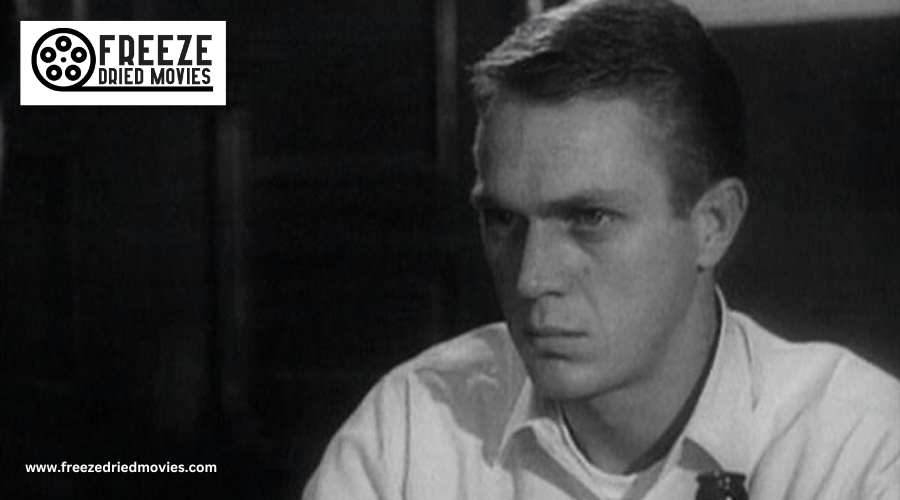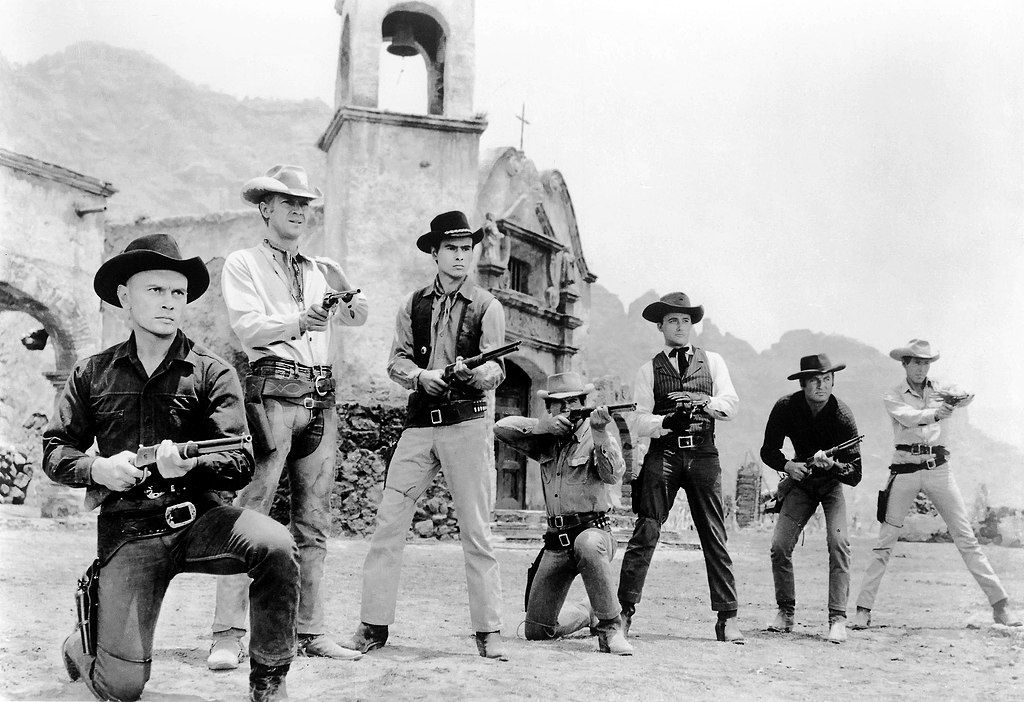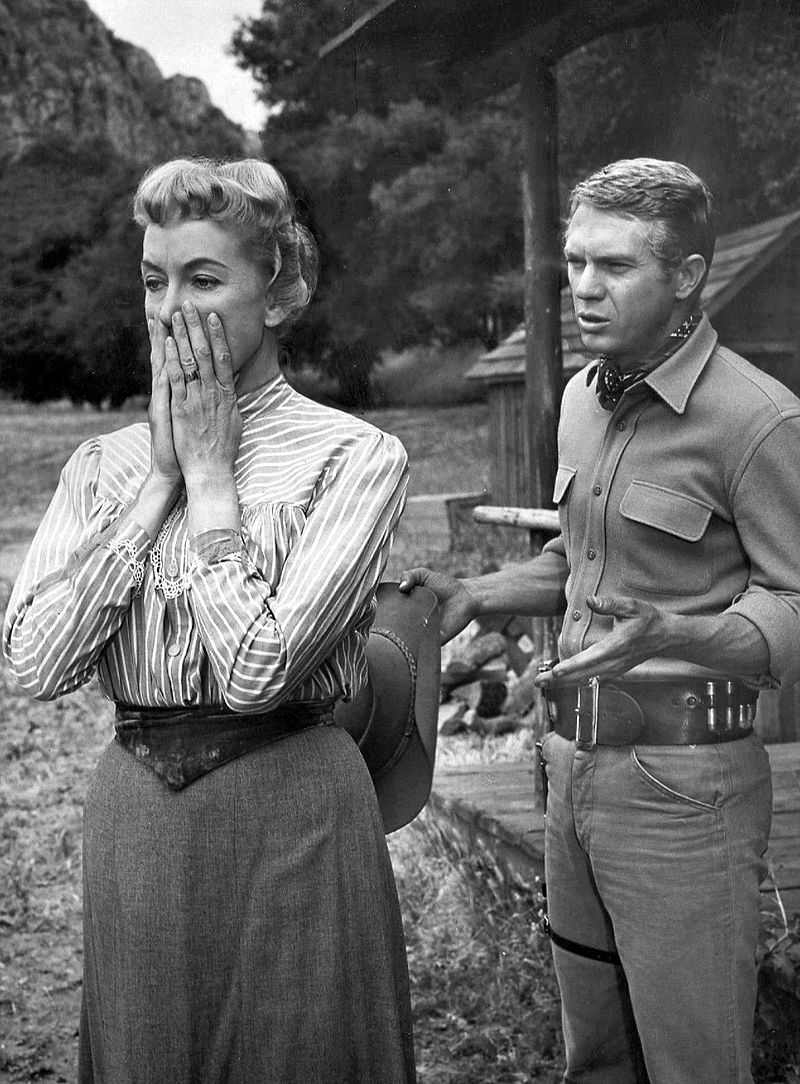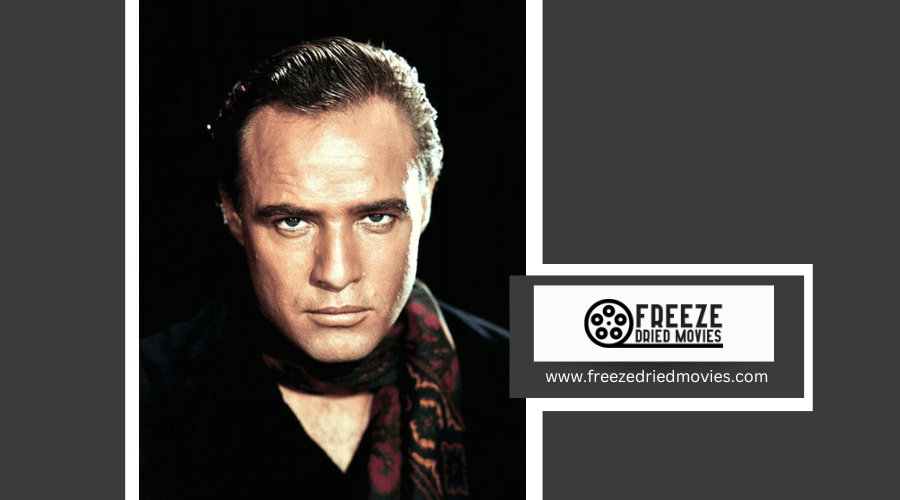Steve McQueen: The Cool Rebel Who Made Westerns Iconic

Steve McQueen revolutionized Westerns through his understated cool and complex antihero persona. You'll recognize his journey from circus kid to Marine before breaking through as bounty hunter Josh Randall. His scene-stealing techniques in "The Magnificent Seven" famously irritated co-star Yul Brynner, while his revenge-driven character in "Nevada Smith" cemented his "King of Cool" status. His rebellious spirit continues to influence how we view the American cowboy archetype.
Key Takeaways
- McQueen's minimalist acting style and laconic persona revolutionized Western antiheroes, particularly as bounty hunter Josh Randall.
- His scene-stealing techniques in "The Magnificent Seven" challenged established stars like Yul Brynner through subtle mannerisms.
- McQueen's military background and motorcycle racing passions informed his authentic tough-guy Western characters.
- His portrayal of morally complex, revenge-driven protagonists in films like "Nevada Smith" redefined Western heroes.
- McQueen rejected Hollywood conventions through difficult on-set behavior while creating iconic performances that resonated internationally.
From Circus Kid to Marine: McQueen's Tumultuous Early Years
Though born in the small town of Beech Grove, Indiana during the height of the Great Depression, Steve McQueen's journey to stardom began far from Hollywood's glitz. Raised by his grandparents, he escaped a troubled childhood at 14 to join a circus, before enlisting in the Marine Corps at 17, where he earned promotion to private first class.
His career breakthrough came on television, with appearances on "Trackdown" leading to his star-making role in "Wanted: Dead or Alive," establishing him as the Western genre's compelling new face.
You'll find the roots of McQueen's famous "cool" persona in his early love for motorcycle racing, where weekend competitions provided both thrill and income. After military service, he pursued acting, first in stage productions like "A Hatful of Rain" before landing a minor role in 1956's "Somebody Up There Likes Me."
McQueen's start in acting parallels James Dean's path, as both studied at the prestigious Actors Studio where they developed their distinctive performance styles.
Blazing a Trail on Broadway: McQueen's Acting Foundations
Before engrossing audiences on the silver screen, Steve McQueen honed his craft on Broadway stages, where his journey as a professional actor truly began. His formal training at the Neighborhood Playhouse and HB Studio equipped him with techniques that would later define his minimalist acting style. It was during this formative period that he met Gia Scala, a connection that influenced his approach to the craft. Similar to Marlon Brando, who moved to New York City in 1942 and studied under Stella Adler's teachings at the Actors Studio, McQueen developed his distinctive method approach.
McQueen's first stage dialogue came in a 1952 play produced by Molly Picon, but his Broadway debut didn't arrive until 1955 with "A Hatful of Rain." Between rehearsals and performances, you'd find him at Long Island City Raceway, competing in weekend motorcycle races to supplement his income—an early glimpse of the daring spirit that would later cement his status as the "King of Cool."
Television Breakthrough: Josh Randall and the Birth of an Antihero
While Broadway provided McQueen with formal acting credentials, television catapulted him into American households. As bounty hunter Josh Randall in "Trackdown: The Bounty Hunter" and "Wanted: Dead or Alive," McQueen crafted the laconic antihero persona that would define his career.
Before his silver screen stardom, Steve McQueen honed his stoic, rebellious persona on television, becoming America's favorite bounty hunter.
Despite being notoriously difficult on set, his three-season run (1958-1961) transformed him into a rising star in the Western genre. You can trace McQueen's iconic status to three key elements:
- His impressive fast-draw skills, taught by co-star Robert Culp
- The morally ambiguous bounty hunter character that resonated with viewers
- The distinctive TV performance that directly led to his breakout movie role in "The Magnificent Seven"
This television success established the foundation for McQueen's legendary film career portraying complex antiheroes. Unlike Vincent Price's villains, McQueen specialized in morally gray characters that challenged traditional hero archetypes.
The Magnificent Seven: How Mcqueen Stole Scenes From Yul Brynner

Despite being cast as a supporting character, Steve McQueen transformed his role in "The Magnificent Seven" into a masterclass of scene-stealing artistry. As Vin, his understated performance and distinctive on-screen mannerisms drew attention away from Yul Brynner's lead character, creating tension between the actors.
You can see McQueen's competitive nature throughout the Western classic—adding subtle touches that captivated audiences while frustrating his co-star. Brynner refused to participate in quick draw scenes with McQueen, reportedly fearing the younger actor's superior speed would overshadow him.
Though initially receiving lukewarm reviews in America, the action thriller became a massive international hit, cementing McQueen's status as a rising star. The role established his signature cool persona that would later define his career as the "Cooler King" of Hollywood and revolutionize Western movies forever.
This performance showcased the shift toward complex characters that defined 1950s Westerns, moving away from simplistic hero-villain dynamics to more nuanced portrayals.
Nevada Smith: McQueen's Revenge-Driven Western Persona
Following his breakthrough in "The Magnificent Seven," McQueen solidified his tough-guy image in the 1966 revenge Western "Nevada Smith." As Max Sand, a half-Native American man hunting down his parents' killers, McQueen brought a steely determination to the role that would define his Western persona for years to come.
Despite being 35 years old, McQueen attempted to portray a much younger man seeking vengeance in this prequel to "The Carpetbaggers."
His approach to revenge helped establish the antihero archetype that made him an icon:
- His character rejected forgiveness, noting it "didn't work out that well" for the man on the cross
- The film cemented McQueen's status as cinema's "King of Cool"
- "Nevada Smith" became a cornerstone in his collection of revenge Westerns that audiences couldn't resist
Junior Bonner: Reinventing the Modern Cowboy for the 1970s
McQueen broke away from revenge-driven roles to portray a more nuanced character in Sam Peckinpah's 1972 film "Junior Bonner." As an aging rodeo champion struggling to find his place in a rapidly changing America, McQueen embodied the twilight of the traditional Western hero.
In this role, you'll see McQueen's cowboy refusing to conform to his brother's shopping mall ambitions, perfectly capturing the clash of 1970s values. Though a box office failure initially, the film's authentic depiction of rodeo lifestyle and complex family dynamics eventually earned it classic status.
McQueen's physicality shines in the memorable bar-room brawl scene, showcasing the grit necessary for a modern cowboy. Peckinpah's reinvention of the Western genre through McQueen's performance revealed a hero increasingly out of place in contemporary society.
Tom Horn: McQueen's Final Frontier Statement
As the twilight of his career approached, Steve McQueen delivered what many consider his most haunting performance in 1980's "Tom Horn." Playing the legendary frontier figure who shifted from army scout to hired gun, you'll witness McQueen at his most vulnerable yet commanding.
This stoic, resolute Western character became McQueen's final statement on the genre that helped define his career. You'll appreciate the tragic fate of Horn through McQueen's commanding presence as he portrays:
- A rugged individual whose brutal efficiency against rustlers becomes his downfall
- A man betrayed by the very cattle association that hired him
- A frontier figure whose story mirrors the closing of the Wild West era
Sadly, this powerful late-career Western would be among McQueen's final films before his death that same year.
Behind the Camera: McQueen's Influence on Western Filmmaking
McQueen's mastery of the art of the fast-draw with his character's signature Mares Leg in *Wanted: Dead or Alive* exemplified the rugged individualism that became central to the Western genre's evolution.

The McQueen Legacy: How His Rebellious Spirit Transformed Westerns Forever
Beyond his fast-draw technique, the true magnitude of Steve McQueen's impact on the Western genre lies in his rebellious spirit and defiance of traditional cowboy archetypes. The "King of Cool" transformed Westerns through roles like Josh Randall and Vin Tanner in The Magnificent Seven, where he famously refused to quick draw alongside Yul Brynner.
McQueen didn't just play cowboys—he reinvented them, infusing Westerns with his defiant spirit and effortless cool.
His legacy endures through:
- His portrayal of revenge-seeking Nevada Smith, despite age mismatches
- His evolution as the modern cowboy Junior Bonner in Sam Peckinpah's film
- His poignant final Western performance as Tom Horn
You'll notice McQueen's rebellious nature didn't just steal scenes—it redefined what a Western hero could be, transcending the genre's conventions and leaving an indelible mark despite his relatively limited Western filmography.


